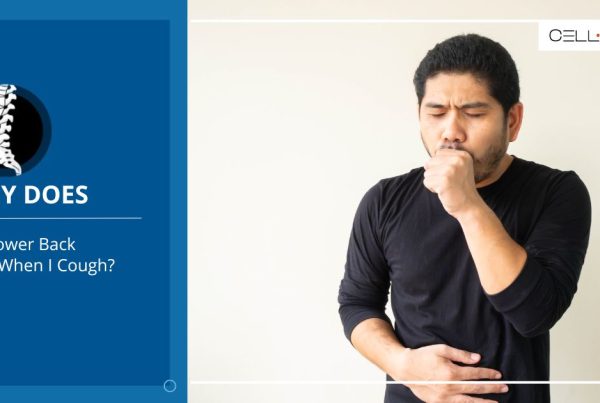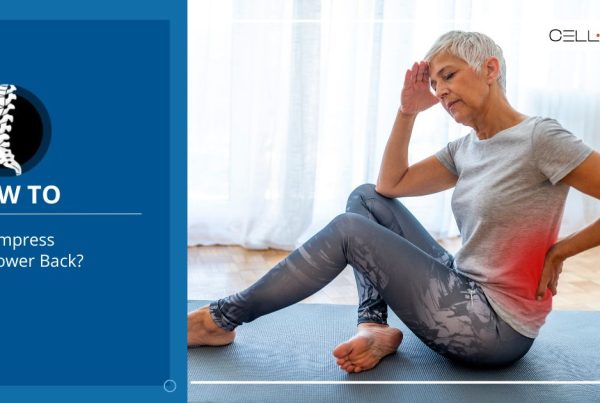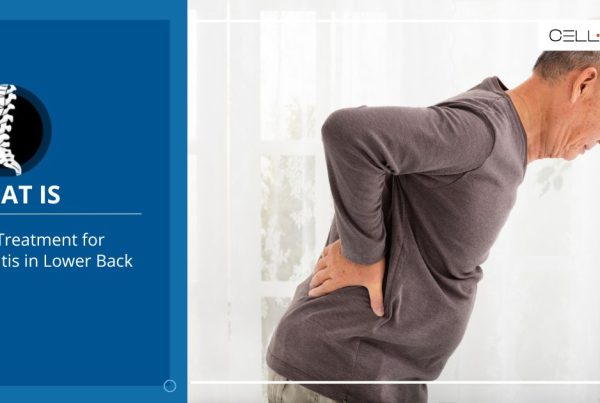Published on: January 2, 2023 | Updated on: August 29, 2024
Back pain is quite joint worldwide, affecting 8 in 10 people at any point. It occurs in different parts of the human body. Sometimes, you feel continuous low back spasms or aching pain in the neck. At other times, you think sciatic nerve pain radiating down your legs, whether chronic or mild and back pain makes your life miserable.
For decades, many people with back pain have been advised to stop performing daily activities and rest. Unfortunately, this is an effective treatment for back pain. Recent studies have found that people with back must move and do various physical exercises to treat their back pain at home. Not all types of back pain require surgery to heal.
Besides physical activities, many alternative back pain treatments can help you delay your back surgery. With proper care, you can even treat your back pain with these 13 alternative methods:
1. Physical Activity
Your first response to back pain might be to avoid all sorts of physical activities. However, doing so can do more bad than good for your back pain. For many patients, strengthening, aerobic, and flexibility exercises remarkably relieve back pain.
- Core strength exercises support the lower back, improve posture, and minimize spinal strain.
- Aerobic exercises promote blood flow to your back tissues to promote healing and relieve stiffness that causes back pain.
- Flexibility exercises strengthen your back muscles and ligaments to increase your range of motion and enhance back function.
2. An Anti-Inflammatory Diet
Our diet makes a huge difference in preventing many types of health issues. Back pain is one of them. The pain primarily occurs when your body reacts to any harm through inflammation.
Thus, including anti-inflammatory components in your diet can help you treat back pain and avoid multiple factors causing it. Experts believe that an anti-inflammatory diet can have similar effects in treating back pain as a nonsteroidal anti-inflammatory drug (NSAID), such as ibuprofen.
Here are some anti-inflammatory foods that you must include in your diet:
- Seeds, including sunflower, chia, and pumpkin seeds
- Fatty fish, such as sardines, salmon, and mackerel
- Nuts, such as walnuts and almonds
- Green vegetables, such as collards, spinach, broccoli, and kale
- Fruits and vegetables in bright colors, including sweet potatoes, carrots, beets, blueberries, oranges, and tomatoes
- Monounsaturated fats, including avocado, canola oil, and olive oil
You must also avoid having foods that promote inflammation. These include processed foods, fast food, and high-fat saturated meals.
3. The Right Amount of Calcium
Calcium is an essential human body component that strengthens bones and teeth. Getting the right amount of calcium can also help relieve back pain from bone defects, such as osteoporosis. With calcium, you must also have sufficient vitamin D to avoid this type of back pain.
The exact calcium requirement varies from person to person and depends mainly on age. Adults should get 1,000 to 1,200 mg of calcium and 600 to 800 international units (IU) of vitamin D daily.
However, remember that too much calcium intake can lead to different health issues. For instance, patients who get more than 2,000 mg of calcium daily can increase heart problems and bone fracture risks.
Some calcium-rich foods include the following:
- Dairy products, including plain yogurt, milk, and cheese
- Tofu
- Green vegetables, such as bok choy and broccoli
- Sardines and salmon with bones
- Soybeans
You can also opt for calcium supplements if planning your diet seems complicated. Consult a dietitian or nutritionist to let them prescribe the right calcium supplements for your back pain.
4. Optimal Weight
A large portion of the US population is overweight or obese. The extra weight can strain your back heavily, resulting in spinal, cervical, and muscle pain. Therefore, losing excess pounds can release pressure from your Spine and help with back pain management.
Losing weight is easy for some people. However, it’s pretty tricky for some people. You can practice practical weight-loss exercises at home, such as cycling, brisk walking, and swimming.
But if it’s not possible to do it alone, you can also get help from an experienced physical therapist to help you get started. Having an optimal weight can help you prevent the need for back pain surgery. You may not even require pain medication.
5. Acupuncture
Acupuncture is an excellent alternative treatment for back pain. It includes inserting tiny needles into the injury site to trigger particular points in your body that manage pain. In the case of back pain, the doctor determines the exact cause and then performs acupuncture accordingly.
There isn’t much research on the effectiveness of acupuncture in treating back pain, but it’s safe to try. A meta-analysis in Spine suggests that acupuncture can be an effective alternative treatment for back pain.
6. Biofeedback
Biofeedback is a modern alternative treatment for back pain that focuses on the patient’s mind and body. The doctor uses electrical sensors to make gradual, subtle changes in the patient’s body to help them manage their back pain.
An analysis of biofeedback found that it can minimize back pain and reduce muscle stress when performed alone or in combination with other pain relief treatments.
<h2<Meditation
Stress and anxiety are significant causes of back pain in people of different age groups. You can try relieving stress and anxiety-related symptoms by practicing meditation and mindfulness therapies.
Many research studies have also found the effectiveness of mindfulness-based activities in back pain reduction. Mindfulness therapy can reduce the intensity of pain in the lower back and even enhance back functions for some time.
7. Yoga
Yoga is also helpful in treating different symptoms associated with back pain. Some patients may also prevent the need for surgery and pain medication altogether.
According to a 2017 study, patients with chronic back pain had no or reduced need for pain medication after practicing yoga for 12 weeks. These results were compared to the patients who practiced physical therapy.
8. Pain Relief Injections
Sometimes, the doctor may opt for injection-based methods for your back pain management. This typically happens when the doctor has already identified the pain source in your back. The injections help eliminate these causes of pain if other alternative treatments for back pain don’t work out.
Joint pain relief injections include nerve blocks, nerve ablations, and epidural steroid injections. They can lower your pain or even stop it for the short term. This means they are not a long-term solution for back pain.
9. Avoid High-Heeled Footwear
High-heeled sandals and stilettos may look stylish, but they put a lot of pressure on your spine, lower back, and hips. This strain can push these areas out of their original position, resulting in muscle overuse and severe back pain. Even shorter heels or shoes with a platform can also adversely affect your back.
If you can’t avoid high-heeled footwear, you can try wearing them for short periods. You must also avoid wearing shoes with pointy toes, as they uncomfortably squish your foot.
Low heel sandals, sneakers, and flats are the best footwear for back pain. Shoes with gel or padded inserts are also excellent for minimizing the impact on your Spine and hips.
10. No Smoking
Smoking can restrict your blood flow and prevent oxygen and nutrients from reaching the tissue behind your body. This can weaken the muscles of your Spine and back, resulting in chronic back pain.
Therefore, quitting smoking and practicing other lifestyle changes can help you manage your back pain. Altogether, leaving smoking is impossible for most people. In such a case, you can talk to your doctor and evaluate your alternative options, such as nicotine patches or prescription medications.
11. Cell-based Therapies
Also known as stem cell therapy, cell-based therapies are a popular alternative treatment for back pain. It is a less-invasive and painful method involving harvesting healthy cells from the patient’s own or “autologous” tissues. These cells are then processed and reinjected into the patient’s injury site to promote early recovery from back injuries.
At CELLAXYS, we perform two types of cell-based therapies for back pain:
- Minimally Manipulated Adipose Tissue Transplant (MMAT). In this process, the doctor harvests healthy cells from your adipose (fat) tissues and injects them into the source of pain. One great thing about MMAT is that the doctor can perform it in multiple locations in the same procedure.
- Bone Marrow Concentrate (BMAC). The doctor extracts highly concentrated cells from your bone marrow and injects them into the injury site.
MMAT and BMAC take about 1.5 to 2 hours to complete. Both are outpatient procedures, meaning you can go home right after the procedure. The doctor uses live X-rays or Ultrasounds to identify the source of pain in your back.
12. Platelet-Rich Plasma Therapy (PRP)
PRP has been a popular treatment among athletes for several sports-related injuries for decades. The process starts by extracting a blood sample from the patient and isolating platelets. Then, the platelets are processed and reinjected into the patient’s injury site.
Platelets are the healing components in the human body. They release 10 Growth Factors to promote the development of new tissues. They also attract healing cells from the blood to boost the body’s natural healing process. Lastly, they create a web-like scaffolding called fibrin that encourages the growth of new cells and tissues.
PRP aims to increase the number of platelets in the patient’s injury site to promote healing. It is completed within 45 minutes. Patients who undergo PRP at CELLAXYS show outstanding pain management responses.
Sources
Footnotes
- Chou R, Loeser JD, Owens DK, Rosenquist RW, Atlas SJ, Baisden J, Carragee EJ, Grabois M, Murphy DR, Resnick DK, Stanos SP. Interventional therapies, surgery, and interdisciplinary rehabilitation for low back pain: an evidence-based clinical practice guideline from the American Pain Society. Spine. 2009;34(10):1066-77.
- Gordon R, Bloxham S. A Systematic Review of the Effects of Exercise and Physical Activity on Non-Specific Chronic Low Back Pain. Healthcare (Basel). 2016;4(2):22.
- Kuritzky L, Samraj GP. Nonsteroidal anti-inflammatory drugs in the treatment of low back pain. Journal of Pain Research. 2012;5:579-90.
- Lam M, Galvin R, Curry P. Effectiveness of acupuncture for nonspecific chronic low back pain: a systematic review and meta-analysis. Spine. 2013;38(24):2124-38.
- Sielski R, Rief W, Glombiewski JA. Efficacy of Biofeedback in Chronic back Pain: a Meta-Analysis. International Journal of Behavioral Medicine. 2017;24(1):25-41.
- Saper RB, Lemaster C, Delitto A, Sherman KJ, Herman PM, Sadikova E, Stevans J, Keosaian JE, Cerrada CJ, Femia AL, Roseen EJ, Gardiner P, Gergen Barnett K, Faulkner C, Weinberg J. Yoga, Physical Therapy, or Education for Chronic Low Back Pain: A Randomized Noninferiority Trial. Annals of Internal Medicine. 2017;167(2):85-94.
References
- 10 alternative back pain treatments to try before choosing surgery. The University of Texas Southwestern Medical Center. Accessed 9/14/2023.
- 7 Ways to Treat Chronic Back Pain Without Surgery. Johns Hopkins Medicine. Accessed 9/14/2023.
- Back Pain. MedlinePlus. Accessed 9/14/2023.
- Bone Health and Osteoporosis. The National Institute of Arthritis and Musculoskeletal and Skin Diseases (NIAMS). Accessed 9/14/2023.
- Obesity and Overweight. The Centers for Disease Control and Prevention (CDC). Accessed 9/14/2023.
- How Tobacco Affects the Heart and Blood Vessels. ABIOMED. Accessed 9/14/2023.
CELLAXYS does not offer Stem Cell Therapy as a cure for any medical condition. No statements or treatments presented by Cellaxys have been evaluated or approved by the Food and Drug Administration (FDA). This site contains no medical advice. All statements and opinions are provided for educational and informational purposes only.
Dr Pouya Mohajer
Author
Pouya Mohajer, M.D. is the Director of Spine and Interventional Medicine for CELLAXYS: Age, Regenerative, and Interventional Medicine Centers. He has over 20 years of experience in pain management, perioperative medicine, and anesthesiology. Dr. Mohajer founded and is the Medical Director of Southern Nevada Pain Specialists and PRIMMED Clinics. He has dedicated his career to surgical innovation and scientific advancement. More about the doctor on this page.
Dr Pejman Bady
Contributor
Dr. Pejman Bady began his career over 20 years ago in Family/Emergency Medicine, working in fast-paced emergency departments in Nevada and Kansas. He has served the people of Las Vegas as a physician for over two decades. Throughout this time, he has been met with much acclaim and is now the head of Emergency Medical Services in Nye County, Nevada. More about the doctor on this page.









